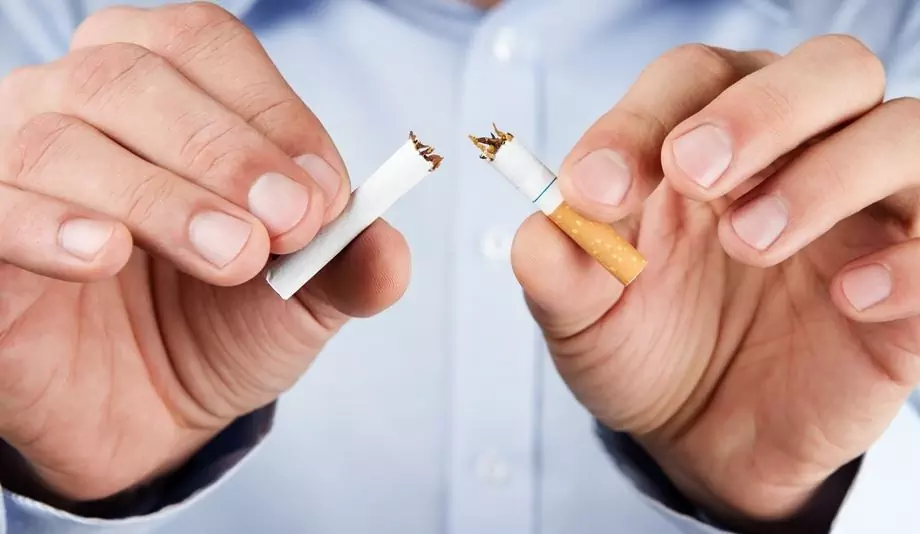- Author Rachel Wainwright [email protected].
- Public 2024-01-15 19:51.
- Last modified 2025-11-02 20:14.
How to remove puffiness under the eyes
The content of the article:
- How to remove puffiness under the eyes
- How to quickly remove puffiness under the eyes at home
- Causes and symptoms
- Video
The question of how to remove puffiness under the eyes often worries many people. However, it is impossible to give an unambiguous answer to this question, since the causes of edema can be different, ranging from completely harmless, such as drinking alcohol the day before, to serious heart or kidney diseases. Let's look at various ways to solve this problem.

It is not difficult to remove puffiness under the eyes, unless they are caused by any disease
How to remove puffiness under the eyes
Medical treatment of eyelid puffiness is carried out only in cases where it is a symptom of a particular disease. In this case, in order to get rid of the cosmetic problem, therapy is needed to eliminate the cause and is carried out by doctors of the appropriate profile (cardiologists, ophthalmologists, plastic surgeons, nephrologists).
In cases where swelling of the eyelids is associated with impaired venous or lymphatic outflow, the doctor may recommend injections of Pinoxide, performed in the periorbital region.
Ointments, which include various biologically active substances, help to eliminate puffiness:
- Heparin ointment. The main active ingredients in its composition are heparin (thins the blood) and benzyl nicotinate (dilates blood vessels). Thanks to their action, the venous outflow in the area of application of the ointment is improved. Other ingredients (peach oil, petroleum jelly, glycerin) moisturize and nourish the eyelid skin. The ointment is applied to the problem area 2 times a day. The course of treatment is 2 weeks.
- Troxevasin. Contains in its composition rutinol - a substance that has a strengthening effect on the walls of blood vessels and reduces their permeability. Apply twice a day to the skin of the eyelids with light movements, avoiding contact with the mucous membrane of the eyes.
- Solcoseryl. The main active ingredient is an extract from the blood of calves. The ointment stimulates collagen production and improves metabolic processes in the subcutaneous tissue. It must be applied to the skin of the periorbital area every three days.
- Blepharogel. Improves metabolic processes and regulates the moisture content in the subcutaneous tissue. The main active ingredients are hyaluronic acid and aloe vera extract. The gel is contraindicated only in case of individual intolerance to the components.
How to quickly remove puffiness under the eyes at home
If the swelling of the eyelids is due to physiological reasons (sleepless night, crying, drinking alcoholic beverages or salty foods), then you can cope with it quite quickly with the help of simple recipes of traditional medicine:
- Cucumber mask. Cut fresh cucumber into thin slices and place them on eyelids. Keep for 15-20 minutes. After that, you should wash your face with cool water and apply any nourishing cream on your eyelids.
- Compress with tea. An effective method to relieve puffiness under the eyes caused by prolonged crying. Pour boiling water over two tea bags and leave for 5 minutes. Remove from water and cool to a comfortable temperature. The bags are applied to the eyelids, covered with a cotton swab on top and kept for half an hour.
- Massage. Apply some nourishing cream to eyelids and fingertips. Massage the eyelids with light tapping movements. Excess cream is removed with a cotton pad.
- Ice with parsley. Grind a bunch of parsley in a blender and squeeze the juice from the resulting gruel. Add 10 ml of parsley juice to 20 ml of boiled water. Pour the mixture into ice cube trays and freeze in the freezer. With pieces of ice, light massage of the eyelids (movements in a circle) is carried out for 2-3 minutes. If necessary, the procedure can be repeated after half an hour.

An eye mask made from slices of fresh cucumber is one of the easiest and most effective ways to eliminate puffiness.
Causes and symptoms
Edema under the eyes is a pathological process in which excess fluid accumulates in the intercellular space of the lower and / or upper eyelids.
A distinction should be made between concepts such as puffiness and bags under the eyes. The latter usually occur in older people. Their development is due to the skin's loss of its elasticity, as a result of which it can no longer effectively support the subcutaneous tissue located in the lower eyelid region.
Puffiness under the eyes, depending on the etiological factor, is usually combined with other symptoms:
| Cause | Signs, development mechanism |
| Inflammation (chalazion, barley, furunculosis, erysipelas) | The affected eyelid is hyperemic, edematous, painful on palpation. |
| Internal diseases |
In case of impaired renal excretory function, edema of the lower eyelids is observed. They are most pronounced in the morning hours. In cases where the swelling increases in the evening, and is practically absent in the morning, one can assume cardiac pathology. |
| Allergy | Contact with an allergen (pollen, cosmetics, food) leads to the development of swelling in the periorbital region. The patient develops severe itching, a sensation of a foreign body in the eyes. The mucous membrane is hyperemic. Often, allergic eye edema is combined with sneezing, nasal congestion, and lacrimation. |
| Hormonal changes | In women, swelling under the eyes is often caused by a change in the level of sex hormones during puberty and menopause, pregnancy. Another reason for their appearance is hormone replacement therapy. |
| Mechanical injuries (insect bites, burns, fractures of the skull bones, bruises of the soft tissues of the face) | The occurrence of edema is associated with damage to the blood vessels and the accumulation of poured blood in the tissue of the eyelids. |
| Lymphatic and venous outflow disorders | Any surgical intervention, including cosmetic surgery, is almost always accompanied by the development of soft tissue edema in the periorbital region. Its occurrence is explained by damage to the venous and lymphatic vessels, resulting in the accumulation of intercellular fluid. |
| Visual fatigue | Constant tension of the eye muscles, for example, during prolonged work at a computer or with papers, causes a disruption in the blood supply to the eyelids. There is stagnation of blood in the venous vessels and plasma sweats into the intercellular substance of the eyelids. |
| Excess salt | Sodium ions contained in table salt have the ability to retain fluid in the human body, and in addition increase the feeling of thirst. Therefore, the abuse of salty food leads to swelling of the soft tissues. |
| Inadequate fluid intake | An adult should drink 2-2.5 liters of water per day. Moreover, most of the volume should be drunk in the first half of the day. Lack of fluid leads to a paradoxical reaction - diuresis (urine formation) decreases and fluid begins to be deposited in soft tissues "in reserve". |
| Lifestyle | A high probability of puffiness around the eyes is noted in people who love nightlife, abuse alcohol and sugary carbonated drinks. |
| Cry | The lacrimal fluid contains salts. They irritate the skin and promote fluid retention in the subcutaneous tissue. In addition, tears always arise against a background of severe stress, which in turn is accompanied by insomnia, which also contributes to edema. |
Video
We offer for viewing a video on the topic of the article.

Elena Minkina Doctor anesthesiologist-resuscitator About the author
Education: graduated from the Tashkent State Medical Institute, specializing in general medicine in 1991. Repeatedly passed refresher courses.
Work experience: anesthesiologist-resuscitator of the city maternity complex, resuscitator of the hemodialysis department.
Found a mistake in the text? Select it and press Ctrl + Enter.






